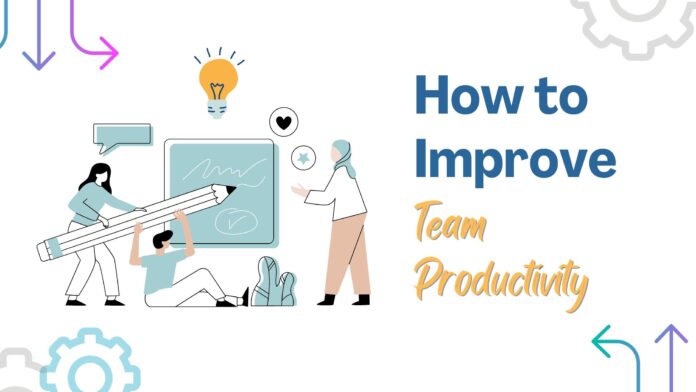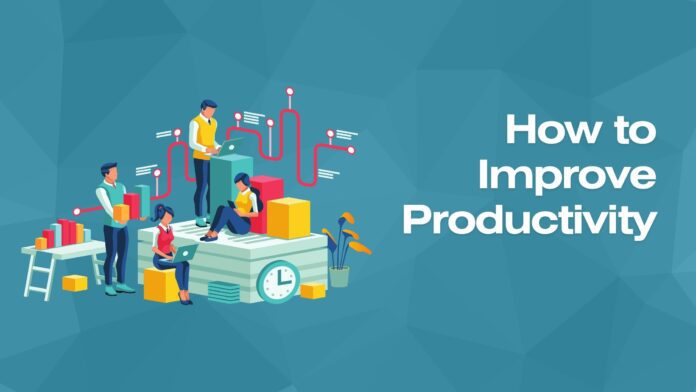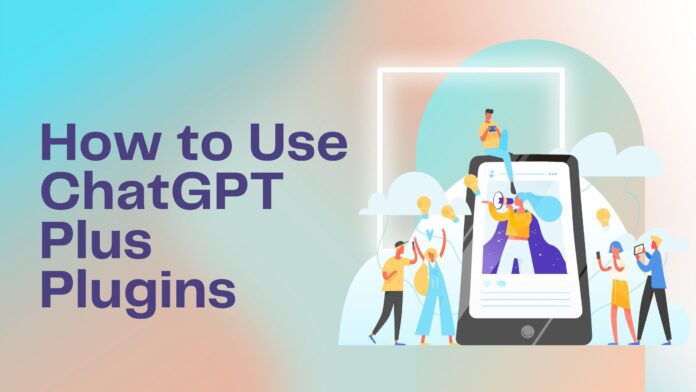Introduction
In today’s fast-paced job market, crafting a compelling resume that captures the attention of potential employers is paramount. One tool that has gained significant traction in aiding individuals in this endeavor is ChatGPT.
As an AI-powered language model developed by OpenAI, ChatGPT utilizes advanced natural language processing (NLP) techniques to generate human-like text based on the input it receives. This innovative technology has revolutionized various aspects of writing, including resume creation.
Brief Overview of ChatGPT
ChatGPT is a groundbreaking AI model designed to engage in conversational exchanges and provide coherent responses that mimic human communication patterns. Developed on GPT-4 architecture, which stands for Generative Pre-trained Transformer 4, ChatGPT has been fine-tuned specifically for generating text in a conversational format. Its vast dataset and deep learning capabilities enable it to understand context, generate relevant content, and adapt responses based on the input it receives.
Moreover, ChatGPT allows users to interact with it through simple prompts or instructions, making it accessible and user-friendly even for those without extensive technical expertise. By leveraging this cutting-edge technology, individuals can harness the power of AI to streamline their resume-writing process and enhance the quality of their job application materials.
Importance of a Well-Crafted Resume
A well-crafted resume is a crucial marketing tool that presents a snapshot of an individual’s skills, experience, and qualifications to potential employers. It plays a pivotal role in shaping first impressions and determining whether an applicant advances to the next stage of the recruitment process.
A professionally written resume showcases one’s accomplishments and highlights their suitability for specific roles within an organization. Employers often receive numerous applications for open positions, making it essential for job seekers to differentiate themselves through a well-structured and impactful resume.
A compelling resume conveys relevant information concisely and reflects attention to detail and professionalism – qualities that can significantly influence hiring decisions. Therefore, understanding how to effectively leverage tools like ChatGPT in crafting resumes is key to enhancing job prospects in today’s competitive employment landscape.
Understanding ChatGPT for Resume Writing
Explanation of ChatGPT’s capabilities in generating text
ChatGPT, powered by OpenAI’s GPT-4 (Generative Pre-trained Transformer 4) language model, is a cutting-edge natural language processing tool that understands and generates human-like text. With its vast training data from the Internet, books, and other sources, ChatGPT can comprehend context and language nuances and even follow conversational prompts to produce coherent and relevant outputs.
In resume writing, ChatGPT can leverage its robust language generation capabilities to craft compelling summaries, detailed work experiences, skills sections, and more with minimal user input. One of ChatGPT’s key strengths is its ability to generate diverse and contextually appropriate text based on the provided prompts.
By priming ChatGPT with specific instructions related to resume content like job titles, responsibilities, achievements, or desired skills, users can guide the model to create tailored text that aligns with their professional profile. This adaptability allows individuals to receive personalized resume content while benefiting from ChatGPT’s proficiency in maintaining coherence and relevance throughout the generated text.
How ChatGPT can assist in writing resumes
ChatGPT is a valuable assistant for individuals seeking help crafting resumes by offering an efficient way to generate initial drafts or refine existing content. Its ability to understand natural language queries enables users to interact conversationally with the model when outlining their work history, educational background, accomplishments, and other essential details necessary for a comprehensive resume.
By providing prompts such as “Summarize my experience as a software engineer” or “List my key skills for marketing roles,” users can prompt ChatGPT to generate relevant sections seamlessly. Furthermore, ChatGPT’s assistance extends beyond basic text generation; it can help users explore different phrasing options for conveying their qualifications effectively or suggest industry-specific terminology that may enhance the overall impact of the resume.
Through this collaborative process between human input and AI-generated output, individuals can leverage ChatGPT’s insights to optimize their resumes for specific job applications or tailor them toward targeted industries. The model’s versatility in adapting responses based on user inputs makes it a versatile tool for refining resume content with precision and efficiency.
Setting the Context and Goals for the Resume
To effectively utilize ChatGPT in crafting a compelling resume, it is crucial to establish a clear context and define specific objectives. Begin by identifying the target job position and industry for which the resume is tailored.
Understanding the requirements and expectations of the desired role is essential in shaping the resume’s content to resonate with potential employers. By analyzing job descriptions and researching industry trends, you can pinpoint key skills, qualifications, and experiences that should be highlighted in your resume.
Defining the Target Job Position and Industry
Before engaging ChatGPT in generating content for your resume, you must have a solid grasp of the target job position and industry. Clearly defining these parameters will enable ChatGPT to produce relevant text that aligns with your career goals.
When setting this context, consider factors such as job title, responsibilities, required qualifications, company culture, and industry norms. By providing ChatGPT with specific information about the role you are pursuing, you increase the accuracy and effectiveness of the generated content.
Outlining Key Skills and Experiences to Highlight
Once you have clearly understood your target job position and industry, outline key skills and experiences that showcase your qualifications for the role. Articulate these details concisely to guide ChatGPT in highlighting relevant information in your resume. Emphasize accomplishments, certifications, technical proficiencies, soft skills, or other attributes that set you apart as a strong candidate.
By clearly outlining these key elements upfront, you empower ChatGPT to craft a focused narrative that effectively communicates your professional value proposition. These preparatory steps are foundational pillars for leveraging ChatGPT’s capabilities in producing tailored resume content that resonates with recruiters or hiring managers.
Enhancing the Resume with Personal Touches
Incorporating Personal Achievements and Unique Selling Points
When utilizing ChatGPT to write a resume, it’s crucial to infuse the document with personal achievements and unique selling points that set you apart from other candidates. Begin by listing out your most notable accomplishments, both professionally and academically.
These could include surpassing sales targets, leading successful projects, earning certifications, or receiving accolades. Highlighting these achievements showcases your capabilities and helps potential employers understand the value you bring to the table.
Moreover, emphasize any unique skills or experiences that make you a standout candidate for the specific role you are targeting. Whether it’s fluency in multiple languages, expertise in a niche technology, or a track record of innovative problem-solving, these unique selling points can significantly boost your resume’s impact.
Customizing Language and Tone to Reflect Individual Personality
While ChatGPT can assist in generating content efficiently, it’s essential to customize your resume’s language and tone to reflect your personality accurately. Consider how you naturally communicate in professional settings and ensure that your resume captures that essence. If you are known for being detail-oriented and precise, incorporate language that conveys those traits throughout your resume.
On the other hand, if you possess a creative flair or have a knack for storytelling, infuse elements of creativity into how you present your experiences and skills. By maintaining authenticity in both language and tone, you create a more engaging resume and provide employers with a glimpse into who you are beyond just qualifications.
Incorporating personal touches into your resume goes beyond merely listing achievements; it involves weaving elements of your personality into every document section. Consider how certain hobbies or interests may align with the company culture or job requirements and subtly incorporate them where relevant.
For example, if you regularly volunteer at an animal shelter and apply for a role at an organization with strong community values, mentioning this could showcase your alignment with their ethos. Remember that while professionalism is vital in resumes, injecting elements of personal touch can help humanize your application and make it more memorable to recruiters amidst a sea of candidates.
Optimizing Keywords for Applicant Tracking Systems (ATS)
In today’s competitive job market, it’s crucial to tailor your resume with relevant keywords to increase its chances of getting noticed by applicant tracking systems (ATS). Employers use these software programs to manage job applications and screen resumes based on specific criteria. To optimize your resume for ATS, start by carefully reviewing the job description and identifying key skills, qualifications, and industry-specific terms mentioned in the posting.
Using these keywords strategically throughout your resume can improve its visibility and ranking within the ATS. When including keywords in your resume, ensure they are seamlessly integrated into the content and appear naturally within context.
Avoid simply listing keywords without supporting them with relevant examples or experiences. Use variations of keywords where appropriate to demonstrate a diverse skill set and avoid redundancy.
Additionally, consider using industry-related jargon or acronyms commonly used in your field to further align your resume with specific job requirements. By strategically optimizing your resume with pertinent keywords, you can enhance its chances of passing through ATS screening processes and reaching human recruiters for further consideration.
Structuring Content for Readability and Visual Appeal
Beyond keyword optimization, your resume’s overall structure and formatting play a significant role in capturing the attention of hiring managers or recruiters. A well-organized layout not only improves readability but also enhances the visual appeal of your document. Begin by selecting a clean and professional font style that is easy to read, such as Arial or Calibri, and maintain consistency throughout the resume.
Use appropriate font sizes for headings, subheadings, and body text to create a hierarchy and seamlessly guide readers through different sections. When structuring content, consider using bullet points to highlight key achievements or responsibilities in each job experience listed on your resume.
This format allows information to be presented succinctly while making it visually accessible for recruiters to quickly scan. Ensure adequate white space between sections to avoid cluttered text blocks and improve overall aesthetics.
Moreover, incorporate clear section headings such as “Professional Experience” or “Skills” to segment information effectively. By organizing content logically and enhancing visual appeal through thoughtful formatting choices, you can present yourself professionally on paper while maintaining reader engagement throughout your resume.
Finalizing the Resume
The Art of Proofreading: Polishing Your Masterpiece
Before finalizing your resume, it is crucial to meticulously proofread every word for grammar, spelling, and formatting errors. Simple mistakes can leave a negative impression on potential employers, so take the time to review each section carefully. Look out for punctuation errors, verb tense inconsistencies, and typos that may have slipped through.
Utilize tools like Grammarly or Microsoft Word’s spell check to catch any glaring, overlooked errors. Ensure that your resume flows smoothly and conveys your qualifications effectively.
One effective strategy for proofreading is to read your resume aloud. This method can help you identify awkward phrasing or areas where the content doesn’t flow naturally.
Another tip is to have a trusted friend or colleague review your resume. A fresh set of eyes can often catch mistakes you might overlook. Remember that attention to detail is key when finalizing your resume, as this document represents you professionally and should be flawless in its presentation.
Saving or Exporting: Choosing the Perfect Format
Once you have proofread and perfected your resume, saving or exporting it in your preferred format is the next step. The two most common formats for resumes are PDF and Word documents, each with pros and cons. Saving your resume as a PDF ensures the formatting remains intact and looks consistent across different devices.
It also prevents accidental editing by others and maintains a professional appearance. On the other hand, saving your resume as a Word document provides flexibility if you need to make quick edits in the future or if an employer specifically requests this format.
However, when sharing Word documents, be mindful of formatting issues, as they may appear differently on various devices or software versions. Ultimately, choose the format that best suits your needs and aligns with industry standards for submitting resumes online or via email.
Additional Tips & Resources
Guidance on Cover Letters or Other Application Materials
Crafting a compelling cover letter to accompany your resume is essential in making a strong first impression on potential employers. ChatGPT can also assist in generating cover letter content by providing a personalized touch tailored to the specific job application.
Remember, the cover letter should complement your resume by highlighting key experiences and skills while showcasing your enthusiasm for the position. If possible, it’s crucial to address the hiring manager by name and express why you are uniquely suited for the role.
Use ChatGPT to draft a persuasive narrative that effectively conveys your passion and qualifications. Moreover, when it comes to other application materials, such as thank-you notes or follow-up emails after the interview, maintaining professionalism and courtesy is key.
ChatGPT can help generate concise yet impactful messages expressing gratitude for the opportunity while reiterating your interest in the position. These additional communication pieces play a significant role in showcasing your professionalism and dedication throughout the application process.
Links to Resume Writing Guides or Templates
In addition to utilizing ChatGPT for resume writing assistance, it’s beneficial to explore comprehensive resume writing guides and templates that offer valuable insights into crafting effective resumes. These resources provide detailed instructions on structuring content, choosing appropriate fonts and layouts, and tailoring resumes for different industries or job positions.
Incorporating these best practices into your resume-building process can enhance its visual appeal and readability while ensuring alignment with industry standards. Online platforms like LinkedIn Learning, Indeed Career Guide, or The Muse offer a wealth of resources, including step-by-step guides on resume optimization and expert tips from career professionals.
Templates provided by websites such as Canva or Microsoft Office can serve as helpful starting points for designing visually appealing resumes that stand out to recruiters. Additionally, exploring industry-specific forums or networking groups may provide further insights into tailoring resumes for specific roles or sectors effectively.
Conclusion
Leveraging ChatGPT for resume writing can streamline the process and help you create high-quality resumes tailored to specific job opportunities. Following the steps outlined in this article and incorporating additional tips and resources can enhance your chances of standing out in a competitive job market. Remember that while technology like ChatGPT can assist in generating content efficiently, adding personal touches, optimizing keywords, and finalizing details are crucial steps in creating a compelling resume that effectively showcases your qualifications and experiences.
Diving deeper into the world of AI-enhanced writing, why stop at resumes? Uncover the full potential of your creativity with our in-depth guide on How to Use ChatGPT Plugins. Discover tools that transform how you write, research, and engage with content, propelling your projects to new heights.










